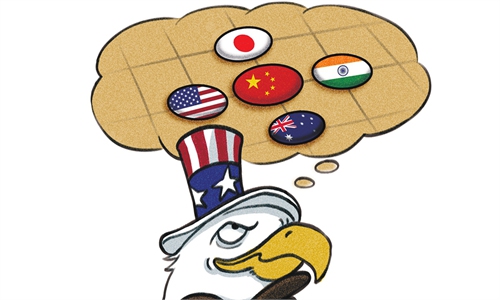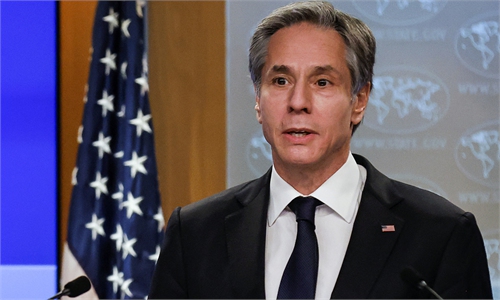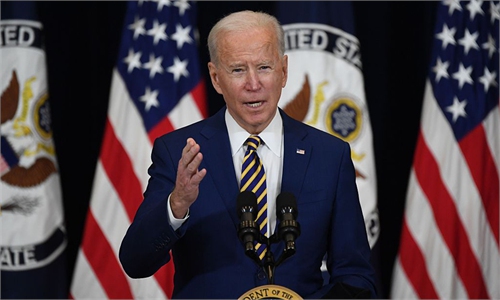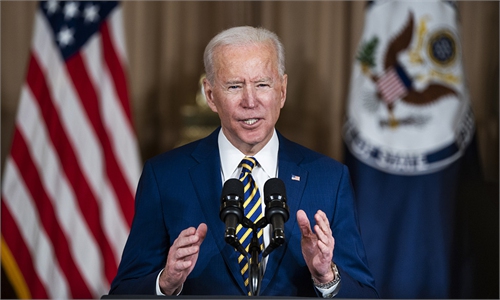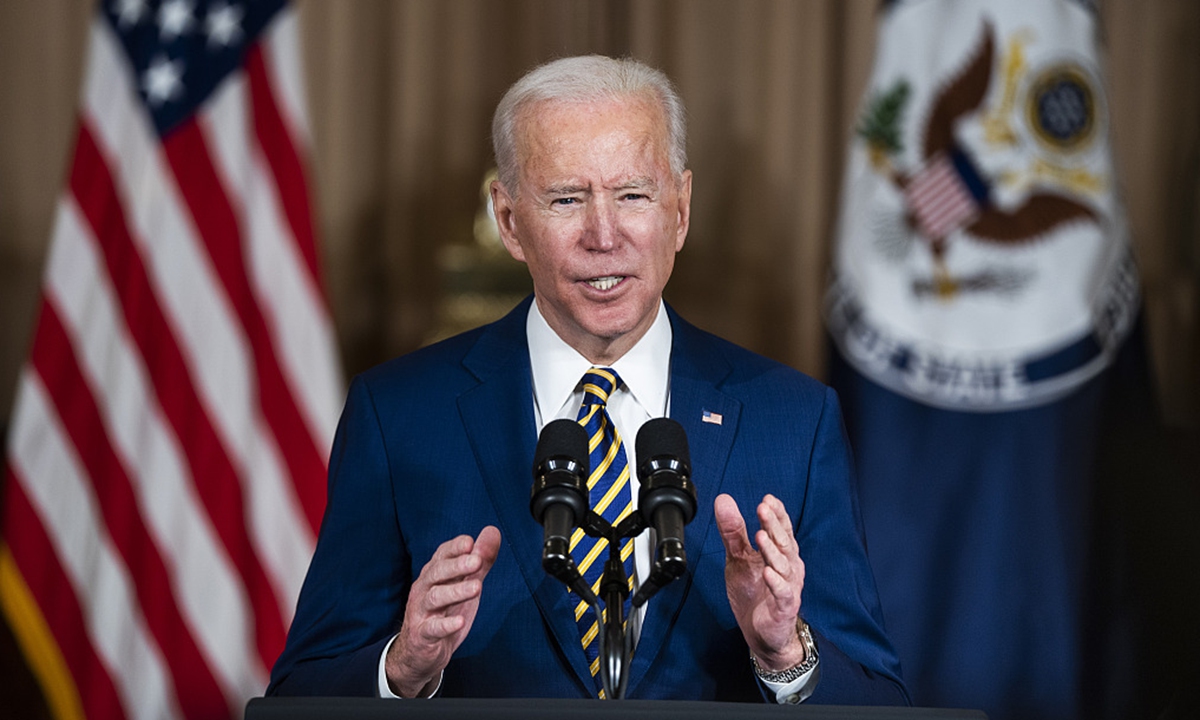
US President Joe Biden. Photo: VCG
Australian Prime Minister Scott Morrison on Friday said US President Joe Biden will join him, and the leaders of Japan and India, in a first-ever "Quad" bloc virtual summit, the Hill reported on the same day.
This demonstrates the Biden administration will intensify collaboration with other members under the Quad framework. Even since days before taking office, Biden has repeatedly said the US would return to multilateralism in his presidency. Rebuilding cooperation and coordination with allies and partners will be an important part of such return. In the Asia-Pacific region, apart from strengthening alliances with countries such as Japan, South Korea, the Philippines and Australia, the US' other leverage is the Quad.
In the past, the highest level of Quad meetings was among foreign ministers of the four countries. This time, the bloc is going to hold a meeting among the top leaders of the four countries, including President Biden. This shows the US has attached great importance to the mechanism.
The first-ever Quad summit among four top leaders is anticipated to talk about nothing more than intensifying members' cooperation in politics, the economy, military and security, jointly dealing with the uncertainties within the region, and drawing up a coordinated China policy and strategy. Washington's aim is to maintain its dominance in the region, while the other three want to prevent China's rise from affecting their interests.
Morrison also said, "The Quad is very central to the United States and our [Australia's] thinking about the region, and looking at the Indo-Pacific also through the prism of our ASEAN partners and their vision of the Indo-Pacific," cited by Bloomberg.
Australia takes Quad as central first because the country follows the US due to its ideological differences with China, and keeps a high level of vigilance regarding China's rise. Second, Australia hopes to boost its strategic status in the Asia-Pacific region and intends to play a bigger role in regional affairs. Despite close economic exchanges between China and Australia, the latter has tied itself to the US' anti-China chariot. Canberra wants to exploit Washington's anti-China efforts to impair China's regional influence.
It cannot rule out the possibilities that Quad members including the US and Australia will further rope in ASEAN members to counter China as Southeast Asia is of great significance to the US' Indo-Pacific Strategy.
Yet ASEAN will not easily take sides. ASEAN members have frequent exchanges with China in terms of economy. The two sides have launched the ASEAN-China Free Trade Area since 2010, in which Southeast Asian countries have received a wide range of benefits. China has become vital to Southeast Asian countries. But on the other hand, these countries hope the US can balance China in terms of security in the face of a rising China.
Canberra's national strengths and regional influence are limited. It also has friction with Indonesia. In this context, Australia will not be able to make a big splash in the region. Besides the US, attention should be paid to Japan and India.
As China has been far ahead of Japan, especially in economy, and the two countries are also involved in island disputes, Japan has regarded China as a threat. Counterbalancing the rise of China has become part of Japan's China policy. Resting on its alliance with the US, Japan also hopes to woo in more forces to contain China.
India seems to have deviated from its traditional non-alignment policy. During Prime Minister Narendra Modi's second term, India's economy is not doing well, and its domestic contradictions have seen a rising trend. As its border disputes with China have not been settled, anti-China voices in India still remain a force. The Modi administration intends to divert attention from its domestic contradictions by underlining China's threat.
Against this backdrop, India and Japan are both likely to collaborate with the US under the Quad framework. Even if the four members' interests are not exactly identical, the desire to counter China will tie them together.
The international community is suspecting whether the Quad will expand into an "Asian NATO." This is unlikely. The current scenario differs from that in the Cold War. China and the US will unlikely engage in an all-out cold war. When compared with the Cold War era, economic and people-to-people exchanges are markedly boosted. Due to globalization, China's relations and interests have been intertwined with other countries, including the members of the Quad.
Actually, whether an "Asian NATO" can be established also depends on China's relations with the four members of the bloc as well as other neighboring countries. China unswervingly pursues a foreign policy of peace and puts forward and practices a neighborhood policy featuring amity. This will to a large extent frustrate the US' attempts to expand the Quad into an "Asian NATO."
The author is Deputy Director and senior fellow of the Institute of American Studies, Chinese Academy of Social Sciences. opinion@globaltimes.com.cn
